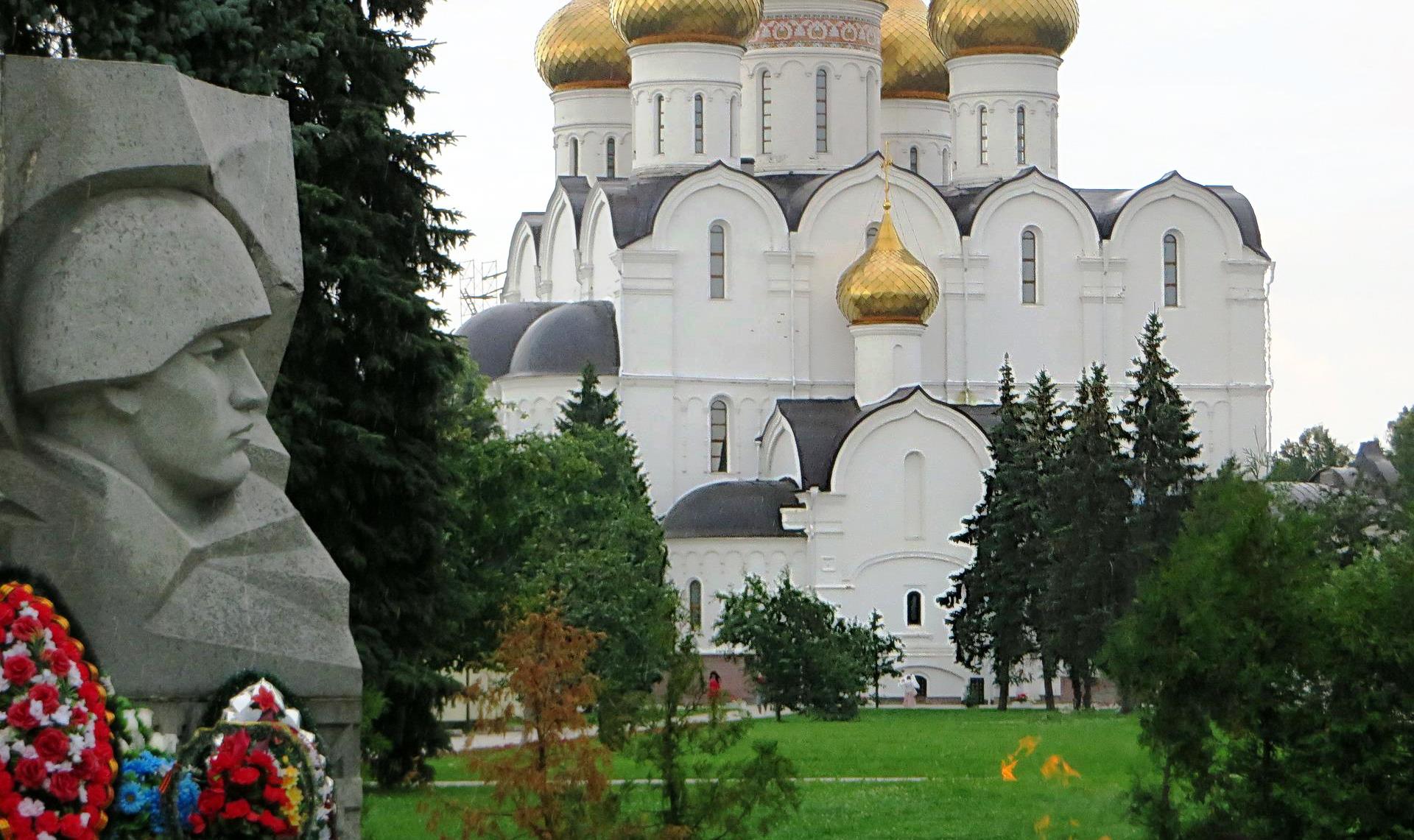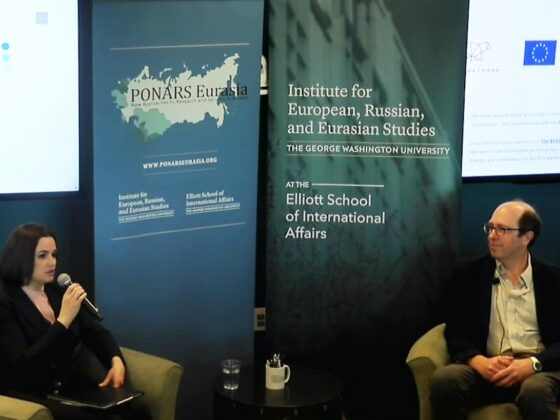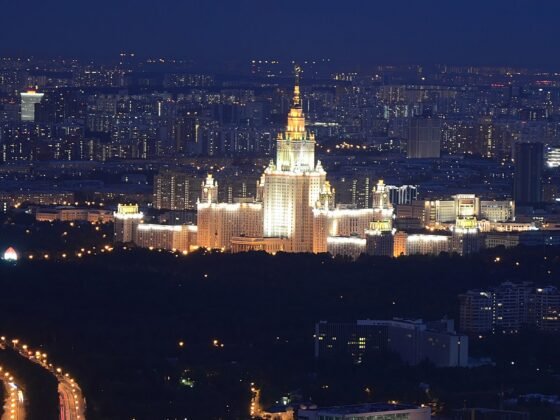We see clear signs that Russia has been applying a “de facto state playbook” in the Ukrainian territories it has seized since the beginning of its war on Ukraine. This is notable, not least of which is Moscow’s current goal of expanding its occupation zone to Transnistria to include Ukraine’s entire Black Sea region. Russia has generally changed its objective from having political leverage over Ukraine to enlarging its territorial control based on the geostrategic and geoeconomic value of the land (and waterways). Despite the relative military parity between Russia and Ukraine, which makes for the slow beginning of a war of attrition, both sides are holding on to the idea of “winning.”
Consequently, a peace agreement between Ukraine and Russia is not a realistic prospect. Kyiv has said it will not accept the loss of territories occupied by Russia since 2014, while Moscow is entrenching and trying to expand its occupation militarily, politically, and economically. Ukraine can writhe toward deadlock, win back occupied territories at the cost of many human lives, or agree to the loss of land and the establishment of a new line of demarcation. Certainly, any agreement that consolidates Russian control over the already occupied territories while pressure points are still changing is a worst-case scenario for Kyiv and its Western allies. The remaining option is to buttress resolve and assistance, and make no territorial concessions.
Plans and Playbooks
The emergence of de facto states in the context of the dissolution of the Soviet Union created opportunities for Moscow to maintain a degree of influence over several former republics. The idea was to leverage this influence to shape their foreign and domestic policies, with the main cases being Moldova, Georgia, Armenia, and Azerbaijan (Belarus aside). In Moldova and Georgia, Russia managed to establish a military presence on the ground in the form of so-called CIS peacekeeping troops written into ceasefire agreements mediated in the early 1990s. In the case of Armenia and Azerbaijan and the conflict over Nagorno-Karabakh, such a presence was only established in the aftermath of the 2020 war and involved a Turkish contingent, given the role that Turkey played in the conflict. The usefulness of this leverage, however, is debatable. It is perhaps greatest in the case of Armenia, which is highly dependent on Russia as a guarantor of its security, something that was further underlined by the 2020 war.
In Georgia, the 2008 Russian-Georgian war and the subsequent recognition by Russia of the independence of Abkhazia and South Ossetia indicate some of the limits of the leverage attainable through Moscow-controlled de facto states. While South Ossetia was the more “loyal” partner to Russia, it was militarily more vulnerable. On the other hand, Abkhazia had always tried to chart a course of exploiting as much of its situational autonomy from Russia as possible and was less reliable from the Kremlin’s perspective. Therefore, part of the rationale for the recognition of Abkhazia is also likely to have been a desire to limit Sukhumi’s ability to offset Russian influence through engagement with Tbilisi or the EU.
In Moldova and its Transnistrian region, Russian influence also has gradually diminished. A pro-Western majority has become well-entrenched in Moldovan politics with the 2020 presidential and 2021 parliamentary elections. The region’s growing economic integration has slowly offset Russian leverage over Transnistria into the European/EU market as a result of the extension of Moldova’s DCFTA since 2016. While the competitiveness of the Transnistrian economy still depends significantly on Russian gas deliveries and living standards in the region remain, at least partially, tied to Russian pension supplements and remittances from Transnistrian labor migrants in Russia, the fact that approximately 70 percent of Transnistrian exports go to Moldova, Ukraine, and the EU creates important “counter-dependencies” that put limits on how far Russia can push the Transnistrian card short of a significant escalation. Such escalation now appears more likely to be among Moscow’s current strategic plans—despite a clear lack of enthusiasm among the Transnistrian population and leadership.
Planting Flags in Ukraine
Russia’s de facto state playbook in the Ukrainian territories is similar to, but not the same as, the one it used there in 2014. What appears to have changed is that 1) Russia now no longer seeks to maximize its security by using de facto states as a political lever, and 2) it is increasingly focused on expanding territorial control for the value of the territory. In 2014, rather than taking advantage of local conflicts, the Kremlin (as it did in the early 1990s elsewhere) actively created opportunities for establishing de facto states. However, the usefulness of the self-proclaimed Donetsk People’s Republic (DPR) and the Luhansk People’s Republic (LPR) to influence the domestic and foreign policy of Kyiv was limited and diminished over time. Ukraine’s refusal to bow to Russian pressure to reintegrate the DPR and LPR into Ukraine on Moscow’s terms through the implementation of the Minsk agreements created a dead end. It led to a low-intensity conflict along the line of contact in the Donbas that yielded ever-diminishing returns compared to the economic and political cost Russia incurred from propping up the puppet regimes there.
From the start, the creation and maintenance of the self-proclaimed DPR and LPR were seen as a second-best option from Moscow’s perspective, compared to regaining control over all of Ukraine through a pro-Russian government in Kyiv after the Euromaidan revolution of 2013-14. And even this second-best option was a scaled-down version of Russian attempts at creating “Novorossiya” on nine Ukrainian regions.
The other important difference relates to how Russia has used the de facto states it established in the occupied areas of Donbas. Following their establishment through societal destabilization and entrenched occupation by Russian and Russian proxy forces, Moscow recognized the independence of the occupied territories and the whole of the Donetsk and Luhansk regions and then used them in its war of aggression against Ukraine since February 24, 2022.
Geostrategic Shifts in the Azov and Black Sea Regions
Moscow’s “forced” playbook is being applied again in territories it has seized so far in the 2022 war, particularly in the Kherson and Zaporizhzhia regions. Russian tactics of establishing control have barely changed: new pro-Moscow elites are imposed at the beginning of a process to “legitimize” new de facto states. This is then followed by economic measures, such as the introduction of the ruble and talk of local referenda based on the establishment of “people’s republics.” Russian special forces deployed to these regions, and their local proxies push the pro-Ukrainian populations out of the temporarily occupied territories, killing and torturing pro-Ukrainian opinion leaders, intimidating the remaining population, and radically restricting their rights. More recently, this has also included abductions and forced population transfers to Russia, and attempts to re-route internet traffic to Russian servers.
Given the change in policy regarding the use of the DPR and LPR—from presumed leverage over Ukrainian domestic and foreign policy to launchpads of the invasion of Ukraine—the trajectory of any new de facto states is likely to be a fast-track to Russian recognition of their independence and subsequent annexation (as with Crimea) or de facto integration into the Russian Federation (as with Abkhazia and South Ossetia). This indicates a shift in Russian thinking about the value of these territories. They are now less considered as a tool of political leverage over Kyiv and rather as a military-strategic pressure point, with the value of territory per se that counts as a geostrategic resource. This also implies that Russia’s whole approach to the use of de facto states has changed. The Kremlin is no longer trying to maximize its security by using de facto states as levers of influence over domestic and foreign policy choices in the respective neighboring states. Rather, it is one of maximizing power by increasing direct or proxy control over geostrategically valuable territories.
The territories occupied by Russia as of the end of May 2022 stretch along the coast of the Sea of Azov from Novoazovsk to Kherson, including most of Kherson and part of the Zaporizhzhia region. They constitute a highly valuable land corridor from the internationally recognized Russian-Ukrainian border to Crimea. In addition, they could serve as a base for the occupation of neighboring territories (and the creation of other de facto states according to the playbook) and the projection of power into other parts of Ukraine.
Russian progress in this regard has been very limited, but this has not stopped Moscow from pursuing its ambitious and worrying goals for “stage two” of the war: the conquest of all of Ukraine’s Black Sea coast and extending the existing land corridor all the way to Ukraine’s borders with Moldova, a country in the sights of the Kremlin. Moreover, as demonstrated by the forcible mobilization of the male population aged 18-65 into the armed forces of the self-proclaimed DPR and LPR, these de facto states in the making are also a source of “cannon fodder” for Russia’s own depleted invasion force.
Suppose Russia succeeds in establishing further such territories that it occupies directly or by proxy. In that case, it also creates a potential opportunity for Moscow to hold on to them as part of a ceasefire agreement. Such a Korean scenario, with the equivalent of the 49th parallel potentially running along the banks of the Dnipro river, would be highly disadvantageous for Ukraine as it would entrench—although in theory not permanently—Russia’s illegal land grab. Add to that the significantly higher degree of violence against the civilian population in the current war, compared to that in 2014-15, and the more brutal tactics of societal destabilization applied by Russia and its proxy forces, the likelihood of Russia cementing its control of these expanding territories further increases if Kyiv is forced to trade any “temporary” recognitions of Russian-occupied territories for a ceasefire and the subsequent slim prospect of a peace agreement.
Yet, the longer the current war continues, there is also a danger that the Kremlin will regain the military initiative in areas that it considers strategically more important and more feasible for territorial expansion. From this perspective, the outright destruction of cities, civilian and industrial infrastructure, and the unmitigated terrorizing of civilian populations are aimed at forcing Kyiv to surrender on President Vladimir Putin’s terms in order to avoid a complete economic, infrastructural, and humanitarian catastrophe. This would enable Moscow to establish control of territories east of the Dnipro and potentially also of the remainder of the Ukrainian Black Sea coast, connecting Russia, the DPR, and LPR with Transnistria and turning Ukraine into a land-locked country.
The success of such a Russian strategy would immediately also raise the specter of an extension of Moscow’s playbook into Moldova proper, beyond Transnistria, in pursuing its tactics of societal destabilization and subsequent creation of de facto states, for example, in Gagauzia or around Balti. In fact, Putin might even feel emboldened to try and apply this playbook, perhaps in a scaled-down, “deniable” version, to ethnic Russian and Russian-speaking territories in Latvia and Estonia—if not with any realistic prospect of success but with the aim of creating further pressure points and instability.
Conclusions
The worst-case scenario is a ceasefire or peace agreement for Kyiv (and its Western partners) that consolidates Russian control over already occupied territories. It would mean shifting the original line of contact further west and additional losses of economic and human resources, access to the ports of the Azov and Black Seas, and natural resources for Kyiv. Moreover, in the occupied territories, it would further deepen the humanitarian catastrophe for the population, including economic deprivation and large-scale violations of human rights and political repression that have been common in the DPR and LPR in the newly occupied territories.
President Volodymyr Zelensky has so far ruled out concessions on Ukraine’s territorial integrity in negotiations with Russia, and recent statements from U.S. Defense Secretary Lloyd Austin (“even more security assistance for Ukraine”) and UK Foreign Secretary Liz Truss (“continuing to supply Ukraine with the weapons they need to win”) indicate that Kyiv’s Western partners share this view. As sanctions against Moscow begin to take a real toll on the ability of the Russian economy to sustain the war effort and as Western military support seemingly begins to shift the balance of power on the battlefield, a Ukrainian victory may appear possible. But neither Ukraine nor its partners should underestimate the short- and long-term human sacrifices that will be necessary to achieve it.
Tetyana Malyarenko is Professor of International Security and Jean Monnet Professor of European Security at the National University “Odessa Law Academy,” Ukraine. The author’s research receives funding from the Erasmus+ Programme of the European Union.
Stefan Wolff is Professor of International Security at the University of Birmingham, Co-coordinator of the OSCE Network of Think Tanks and Academic Institutions, and a Senior Fellow at the Foreign Policy Centre, London.











